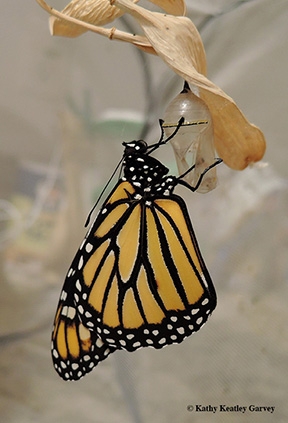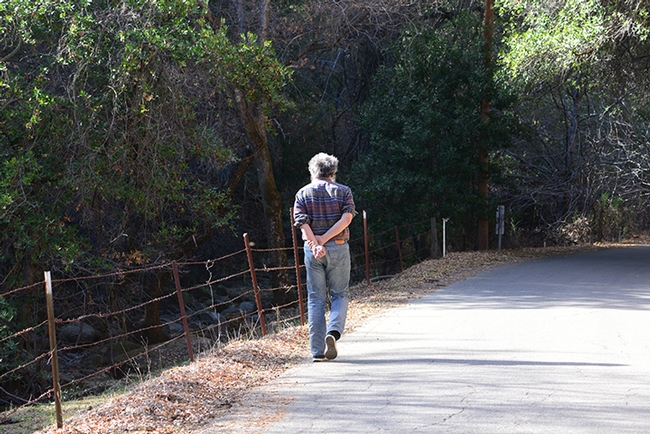
Long time passing
Where have all the flowers gone?
Long time ago
Where have all the flowers gone?
Girls have picked them every one
When will they ever learn?
When will they ever learn?"
--Pete Seeger
The late folksinger and social activist Pete Seeger (1919-2014) sounded many alarms, but a recent article in the New York Times Magazine struck a different but somewhat similar chord: the declining population of insects worldwide.
Brooke Jarvis's piece on "The Insect Apocalypse Is Here," published Nov. 27, should be required reading.
Basically: Where have all the insects gone? What does it mean? Why haven't we noticed? And what are we going to do about it?
Well, butterfly guru/entomologist Art Shapiro, distinguished emeritus professor of evolution and ecology at the University of California, Davis, has noticed. Shapiro has monitored butterfly population trends on a transect across central California for 46 years and maintains a research website at http://butterfly.ucdavis.edu/. The 10 sites stretch from the Sacramento River Delta through the Sacramento Valley and Sierra Nevada mountains to the high desert of the Western Great Basin. Shapiro visits his sites every two weeks "to record what's out" from spring to fall. The largest and oldest database in North America, it was recently cited by British conservation biologist Chris Thomas in a worldwide study of insect biomass.

In her article, Jarvis related: "In October, an entomologist sent me an email with the subject line, “Holy [expletive]!” and an attachment: a study just out from Proceedings of the National Academy of Sciences that he labeled, “Krefeld comes to Puerto Rico.” (See news article on Krefeld's "Insect Armageddon.")
That entomologist was Art Shapiro.
Pesticides, loss of habitat, diseases, climate change, and human encroachment--and more--are some of the reasons why our global population of insects is dwindling.
Shapiro, who engaged in a 90-minute conversation with author Jarvis (and suggested topics and interviews for the piece), is quoted as having one of the few long-term data sets about insect abundance in the United States.
"In 1972, he began walking transects in the Central Valley and the Sierras, counting butterflies," Jarvis wrote. "He planned to do a study on how short-term weather variations affected butterfly populations. But the longer he sampled, the more valuable his data became, offering a signal through the noise of seasonal ups and downs. 'And so here I am in Year 46,' he said, nearly half a century of spending five days a week, from late spring to the end of autumn, observing butterflies. In that time he has watched overall numbers decline and seen some species that used to be everywhere — even species that 'everyone regarded as a junk species' only a few decades ago — all but disappear. Shapiro believes that Krefeld-level declines are likely to be happening all over the globe. 'But, of course, I don't cover the entire globe,' he added. 'I cover I-80.'"
Jarvis quotes plant ecologist Hans de Kroon of Radboud University, the Netherlands, as characterizing the life of many modern insects as trying to survive from one dwindling oasis to the next but with “a desert in between, and at worst it's a poisonous desert.”
Why should we care? As Jarvis succinctly points out: "Insects are the vital pollinators and recyclers of ecosystems and the base of food webs everywhere."
So true.
Now the concern should not only be "Where have all the insects gone?" but "What are we going to do about it?"
Attached Images:
